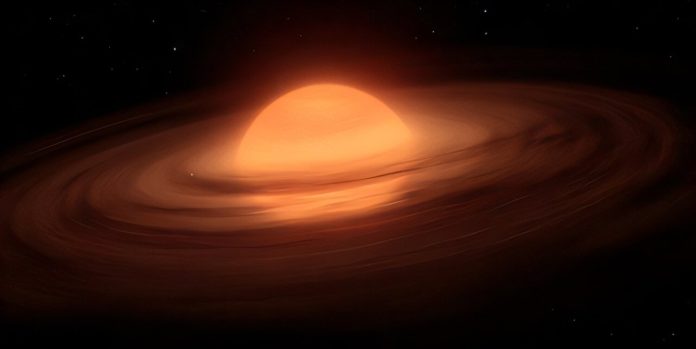
A new study from the University of St Andrews has found that giant, starless planets drifting alone through space may be able to form their own tiny planetary systems—just like stars do.
Using powerful data from the James Webb Space Telescope (JWST), researchers discovered that some of these so-called “free-floating planets” are surrounded by dust disks, hinting that they might be able to create their own planets despite not having a star.
The findings, posted on the arXiv preprint server, focused on eight young, isolated objects with masses around five to ten times that of Jupiter.
These objects are about the same size as giant planets but are not tied to any star system—they’re simply floating through space on their own. Because they don’t give off much visible light, they’re hard to detect, but they glow faintly in the infrared, which is exactly what JWST is designed to observe.
Free-floating planets are fascinating because scientists believe they may form in two ways: either like stars, from the collapse of giant clouds of gas, or like regular planets that form around stars but are later kicked out of their systems.
In this study, the researchers used two of JWST’s powerful infrared instruments to examine the objects in great detail between August and October 2024.
They confirmed that all eight are roughly the size of Jupiter and are extremely young.
Even more exciting, six of them showed extra infrared glow caused by warm dust close by—evidence of surrounding disks. These flat disks of dust and gas are the same kind of structures where planets are born around stars.
The team also detected signs of silicate grains—tiny rocky particles—in these disks. Some of these grains show evidence of growth and crystallization, which are the very first steps in forming rocky planets.
While silicate emissions have been seen before around stars and brown dwarfs, this is the first time scientists have spotted them around planetary-mass objects.
Previous research from the same university has already shown that these disks can last for several million years, giving enough time for small planets to form.
These latest findings suggest that even planets that aren’t orbiting a star could give rise to their own scaled-down solar systems.
Dr. Aleks Scholz, who led the project, said these objects could build miniature versions of solar systems—just much smaller in size and mass.
Dr. Belinda Damian, lead author of the study, added, “This discovery shows that planet formation isn’t just limited to stars.
It might also happen around solitary, starless worlds drifting through the galaxy.”



